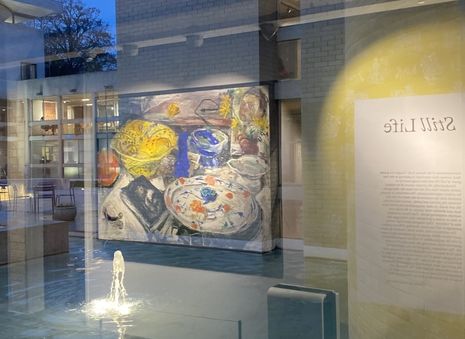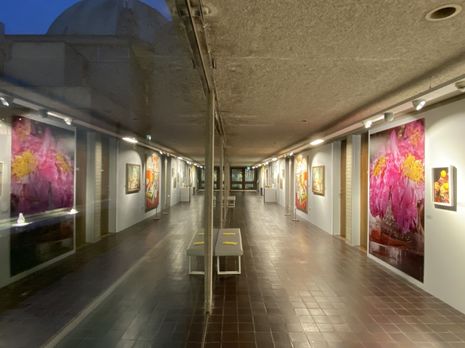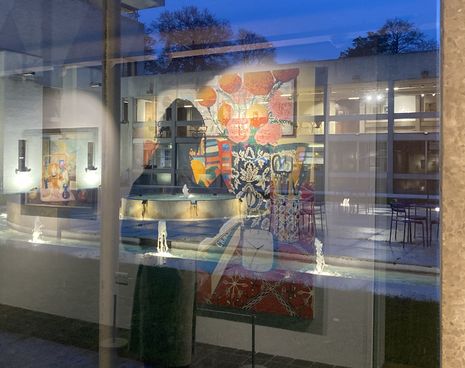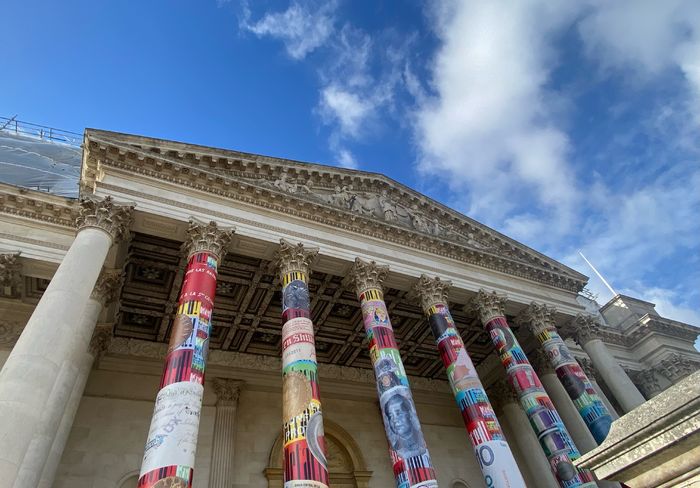Life is Still Life exhibition brilliantly pushes the boundaries of what still life can be
Although I’ve never really understood the appeal of still-life paintings, Murray Edwards’ latest exhibition has forced me to swallow my words

I’ve never really understood the appeal of still-life paintings. Something about staring at bowl after bowl of apples and pears, or an endless array of perfectly arranged tulips has just never really done it for me (artistically, that is). I always saw it as practice more than the real thing – a GCSE art lesson in shadows, light, and shading, for an artist to perfect their skills enough to create actually meaningful work. However, the Life is Still Life exhibit at Murray Edwards has forced me to swallow my words.
The Life is Still Life exhibit at Murray Edwards has forced me to swallow my words
This exhibition consists of still-life paintings created by female artists from the 1940s to the present day, exploring how the genre has often been dismissed due to its associations with the female domestic sphere. When women were excluded from the “high genre” of studying the human body, after being banned from painting naked male forms, they had to resort to the “low genre” of still-life painting instead. However, this exhibition demonstrates how female artists have been able to transform their demotion to this style from a prison to a vessel for creative experimentation. Curated from works in the college’s Women’s Art Collection this exhibit demonstrates how large worldly questions can be thought about using everyday domestic objects.

Walking into Murray Edwards it took me forever to actually get to the exhibit itself, constantly getting distracted by the other pieces of women’s art spanning the college that stopped me in my tracks. When I finally made it, one of the first pieces that struck me was The Collector (1994) by Shani Rhys James. For me, this piece perfectly sums up the exhibit’s voice. It brought out the life aspect of the still-life genre that has so often been overshadowed by paintings’ unmoving monotony. In fact, this painting wasn’t still at all, but full of movement. The bold, bright and heavily textured brushstrokes disrupt the surface of the painting, creating a sense of constant frenzy. The strangely disordered shapes, awkwardly piled onto each other – with flowers seemingly painted onto and growing out of a canvas – created a wonderfully weird reality. The faces, eyes, and bodies hidden among the mess bring the painting to life, pushing the boundaries of what still life can be.

Other stand-out works include There Has Been a Terrible Accident (2022) by Katy Stubbs, consisting of a ceramic sculpture of a decapitated pet budgerigar in a box. In opposition to The Collector, this work is very much still, but not so much alive. This decision made me reconsider how ‘alive’ the cuts of fruits, flowers, and dead game of traditional still life really are, forcing me to rethink the parameters of this genre. Exploring the powerlessness of pets to the cruel carelessness of their human owners, this piece certainly has the element of surprise. Where still life has traditionally bored me, this shocking artwork and the colourful intrigue of the unexplored corridor ahead made me realise that this exhibit’s boldness was something newly different.
These female artists redefine the terms of still life
Even where paintings in the exhibit did err more closely to the side of the tradition, they were also distinctly unique from it. The previously so offensive bowls of pears, although by far not one of the exhibit’s most impressive pieces, didn’t bore me so much in the hands of Maeve Gilmore who gave them a pleasingly unnaturalistic look. Moreover, the classic bowl of fruit was brilliantly reimagined in Still Life (2001) by Sam Johnson, once again rethinking both of these titular terms. The artwork depicts a shifting video loop of a fruit bowl that eventually decays and rots over time, proving that no ‘alive’ object is ever completely still, nor will it forever be alive. This circle of life also sits in stark contrast to the plastic pen just hiding in the foreground that never changes, bringing fears about plastic pollution to the viewer’s mind. And this piece wasn’t the only one responding to contemporary and historical fears. A Hint of Blue II (2021) by Sekai Machache brilliantly inverts traditional still-life by giving the artist a place in her photo, simultaneously transforming it into a self-portrait. Commenting on how still-life paintings were traditionally used to exhibit wealth, she surrounds herself with appropriated China, sitting trapped amongst her domestic belongings as so many were during the Covid-19 lockdowns.
The title of this exhibition comes from Charlotte Brontë’s underrated novel, Villette: “life is still life, whatever its pangs.” And this exhibition reveals just that: still-life painting is still life – it’s not dead, or completely inanimate, there’s movement and shifting ideas behind it. It’s still alive. And everyday domestic objects can still represent important meanings. Breaking out of the traditional mould they were once forced into, the female artists featured in this display redefine the terms of still-life to create a brilliantly bold and innovative exhibit.
 Comment / Plastic pubs: the problem with Cambridge alehouses 5 January 2026
Comment / Plastic pubs: the problem with Cambridge alehouses 5 January 2026 News / Cambridge businesses concerned infrastructure delays will hurt growth5 January 2026
News / Cambridge businesses concerned infrastructure delays will hurt growth5 January 2026 News / New movement ‘Cambridge is Chopped’ launched to fight against hate crime7 January 2026
News / New movement ‘Cambridge is Chopped’ launched to fight against hate crime7 January 2026 News / AstraZeneca sues for £32 million over faulty construction at Cambridge Campus31 December 2025
News / AstraZeneca sues for £32 million over faulty construction at Cambridge Campus31 December 2025 Interviews / You don’t need to peak at Cambridge, says Robin Harding31 December 2025
Interviews / You don’t need to peak at Cambridge, says Robin Harding31 December 2025










